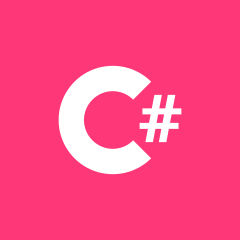使用 WhenAnyObservable 组合和过滤多个事件
我有一个 ViewModel:
一个列表 ReactiveList<MyObject>
单个 MyObject
IsBusy 布尔值
当 MyObject 列表或单个 MyObject 中的“Active”属性都不为真或在任何情况下 IsBusy 为真时,我想禁用该命令。
在将 IsBusy 添加到图片之前,我想出的最佳解决方案是:
var canSave = this.WhenAnyObservable(
x => x.MyObjectsList.ItemChanged, x => x.MyObject.Changed)
.Where(x => x.PropertyName == "Active")
.Select(_ => MyObjectsList.Any(x => x.Active) || MyObject.Active);
SaveCommand = ReactiveCommand.Create(Save, canSave);
这个想法是每次 Active 属性更改时都会重新评估。不确定这是否是最好的解决方案(因此欢迎任何改进它的建议),但我绝对无法将 IsBusy 添加到图片中,以便在 IsBusy 时重新评估 Select 子句(包括 IsBusy 状态)变化。
 哈士奇WWW
哈士奇WWW浏览 563回答 2
2回答
-

回首忆惘然
我认为您的答案可以简化。var itemChangedObs = this.WhenAnyValue(x => x.MyObject.Active);var isBusyObs = this.WhenAnyValue(x => x.IsBusy);var listItemChangedObs = this.WhenAnyObservable(x => x.MyObectsList.ItemChanged).Where(x => x.PropertyName == "Active").Select(_ => MyObjectsList.Any(x => x.Active)).StartsWith(false)var canRunCommand = itemChangedObs.CombineLatest(listItemChangedObs, isBusyObs, (itemActive, listItemActive, isBusy) => (itemActive || listItemActive) && !isBusy);这个版本本质上使用了一个 CombineLatest ,它在将两个 observable 组合在一起后采用您想要的值的 Lambda。在两个 Observables 都发出一个值之前,CombineLatest() 不会产生值,因此为什么 listItemChanged 在前面有一个 StartsWith(false)。默认情况下,WhenAnyValue() 将始终发出值的 default(T) 作为其初始值,因此您不需要这些语句的 StartsWith。 -

慕妹3242003
这是另一种替代方法,它避免了对复杂度为 O(n) 的 MyObjectList.Any() 的需要。此解决方案涉及更多,但具有提高效率的潜力。除了计算listItemChangedObs observable的方式外,它与 Glenn 的CombineLatest方法相同。此版本保持列表中活动对象数的运行总数。因此,每次触发 ItemChanged 时,它只需执行 +1 或 -1 操作。然后它只检查它是否大于 0。public MyViewModel(){ var itemChangedObs = this.WhenAnyValue(x => x.MyObject.Active); var isBusyObs = this.WhenAnyValue(x => x.IsBusy); // Recalculate the # of active objects each time ObjectList is reassigned. var activeListItemCountInitializedObs = this .WhenAnyValue(x => x.ObjectList) .Select( list => { // Return 0 if ObjectList is null. return list == null ? Observable.Return(0) : list .ToObservable() // Otherwise, increment by 1 for each active object. .Select(x => x.Active ? 1 : 0) // We use Aggregate, which is a single value sequence, because // we're only interested in the final result. .Aggregate((acc, current) => acc + current); }) // We no longer need the inner observable from the last time active item count // was initialized. So unsubscribe from that one and subscribe to this most recent one. .Switch(); var activeListItemCountChangedObs = this .WhenAnyObservable(x => x.ObjectList.ItemChanged) .Where(x => x.PropertyName == "Active") // Increment or decrement the number of active objects in the list. .Select(x => x.Sender.Active ? 1 : -1); // An IObservable<bool> that signals if *any* of objects in the list are active. var anyListItemsActiveObs = activeListItemCountInitializedObs .Select( // Use the initialized count as the starting value for the Scan accumulator. initialActiveCount => { return activeListItemCountChangedObs .Scan(initialActiveCount, (acc, current) => acc + current) // Return true if one or more items are active. .Select(x => x > 0) .StartWith(initialActiveCount > 0); }) // ObjectList was completely reassigned, so the previous Scan accumulator is // no longer valid. So we "reset" it by "switching" to the new one. .Switch(); var canRunCommand = itemChangedObs .CombineLatest( anyListItemsActiveObs, isBusyObs, (itemActive, listItemActive, isBusy) => (itemActive || listItemActive) && !isBusy); Save = ReactiveCommand.CreateFromObservable(() => Observable.Return(Unit.Default), canRunCommand);}这是我运行代码时通过的单元测试。它基本上检查 ReactiveCommand 的CanExecute更改状态的次数,以及它是真还是假,每次变量之一发生变化时。[Fact]public void TestMethod1(){ var objectList = new ReactiveList<IMyObject>( initialContents: new[] { new MyObject(), new MyObject() }, resetChangeThreshold: 0.3, scheduler: ImmediateScheduler.Instance); objectList.ChangeTrackingEnabled = true; IMyViewModel myViewModel = new MyViewModel { ObjectList = objectList, MyObject = new MyObject() }; var canExecute = myViewModel.Save .CanExecute .CreateCollection(scheduler: ImmediateScheduler.Instance); Assert.Equal(1, canExecute.Count); Assert.False(canExecute[0]); myViewModel.ObjectList[0].Active = true; Assert.Equal(2, canExecute.Count); Assert.True(canExecute[1]); myViewModel.MyObject.Active = true; Assert.Equal(2, canExecute.Count); myViewModel.IsBusy = true; Assert.Equal(3, canExecute.Count); Assert.False(canExecute[2]); myViewModel.IsBusy = false; Assert.Equal(4, canExecute.Count); Assert.True(canExecute[3]); myViewModel.MyObject.Active = false; Assert.Equal(4, canExecute.Count); var object1 = new MyObject { Active = true }; var object2 = new MyObject { Active = true }; myViewModel.ObjectList = new ReactiveList<IMyObject>( initialContents: new[] { object1, object2 }, resetChangeThreshold: 0.3, scheduler: ImmediateScheduler.Instance); Assert.Equal(4, canExecute.Count); object1 = new MyObject { Active = false }; object2 = new MyObject { Active = false }; myViewModel.ObjectList = new ReactiveList<IMyObject>( initialContents: new[] { object1, object2 }, resetChangeThreshold: 0.3, scheduler: ImmediateScheduler.Instance); Assert.Equal(5, canExecute.Count); Assert.False(canExecute[4]);}
 随时随地看视频慕课网APP
随时随地看视频慕课网APP
相关分类


 C#
C#